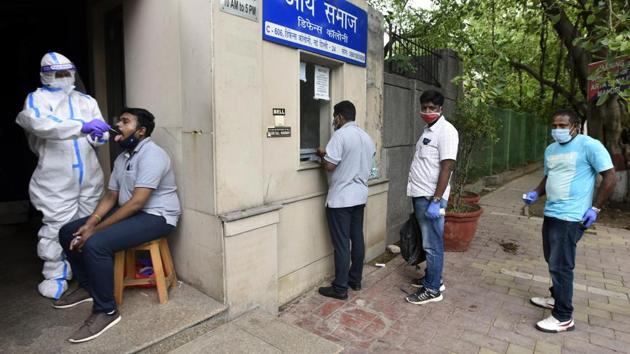Adopt a new paradigm to deal with Covid-19 spread
The epidemic is out in the open. Embark on national surveillance, enhance testing, protect the vulnerable
The Covid-19 situation in India is turning grim with new infections per day racing towards the 30,000 mark. We now have the third-largest number of infections globally. The redeeming feature is the high percentage of recoveries, which can be explained by demography with a larger number of young people getting infected, but shedding the virus in a short period. But case fatality rate is rising especially among elderly and people with co-morbidities.

It is time to identify where we are falling short in our responses. Sporadic corrective measures are not helping. We should realise that the pandemic is no more limited to certain identifiable groups who can be accessed through contact tracing or contained by locking down geographical areas. The pandemic in India is out in the open, whether we technically name it community transmission or not. It is time to adopt a new paradigm in the response to quickly get ahead of the curve.
Until now, we have based our entire response on the number of reported cases, which will touch the million-mark soon. Most of them are symptomatic cases detected by testing. Experts are of the opinion that, for every symptomatic case, there could be several undetected asymptomatic cases. No organised attempt has yet been made to ascertain the estimated number of total infections that India could have which is necessary for a meaningful response.
India had done this earlier in 1999 when the Aids epidemic was at its peak. At that time, we claimed 90,000 reported cases, which was not credible. A nationwide sentinel survey done by the National AIDS Control Organisation estimated HIV prevalence in the country to be around three million. The government, at that time, bit the bullet and announced the figures to a shocked nation. It was chaotic for a few days, with the media pouncing on the government for hiding the facts, but it helped the country mount a strong response for the next 10 years which reversed the trend and brought down new infections by 56%. The estimated prevalence was further revised as 2.4 million.
We need to make a similar effort to determine the size of the pandemic by a national-level surveillance programme. This will provide valuable inputs about the profile of the pandemic, its urban-rural, male-female orientation, and identification of risk groups who need greater care.
Once the size of the infected population is known with a reasonable degree of accuracy, the health care system can be geared to meet the increasing load of symptomatic cases who will report for admission. It will become easier to do advance planning for procurement of drugs, diagnostics, life-saving equipment like oxygen, ventilator systems and protective gear for the health care personnel and prevent the system from getting overwhelmed.
A complementary effort has to be initiated in the area of testing also. Currently, testing is done only for symptomatic cases and contacts. A limiting factor for expansion of testing is the high cost of reverse transfer-polymerase chain reaction test kits and availability. More rapid test kits, both blood-based and swab-based, are now available in the market at relatively affordable cost. The Indian Council of Medical Research has already evaluated many of these kits for sensitivity and specificity.
Under the new strategy, testing should cover a larger section of population based on risk factors, and not just on exposure to Covid-19. People at risk should be able to access testing at voluntary testing facilities in high-prevalence states to start with, and, later, in other parts of the country also. Many countries, including the United States, have introduced voluntary testing, which has promoted health-seeking behaviour in the population. The kits can be provided either free or at subsidised cost to testing centres.
Greater efforts are needed to save the lives of people who are more vulnerable to Covid-19, such as the elderly and those with co-morbidities. Patients often die of co-morbidities due to lack of attention to and care for those health conditions in Covid-19 hospitals and care centres. Specialist medical attention should be provided to them in Covid-19 hospitals to treat the co-morbidities. There were similar instances in the 1990s, when out of fear and stigma, HIV-infected persons were not treated for opportunistic infections and co-morbidities.In the last few weeks, a number of drugs have been re-purposed, with varying degree of effectiveness, for treatment of moderate and severe cases of Covid-19. The timely and effective use of these drugs should help in reducing mortality even in severe cases. The central and state governments should adopt effective procurement mechanisms to make these drugs available in sufficient quantities to physicians treating Covid-19 patients.
Covid-19 has also disproportionately affected the marginalised sections of the population such as HIV-positive persons, tuberculosis patients, sex workers, drug users and gay and transgender people, many of whom are facing discontinuation of treatment for their existing medical conditions. Marginalised groups who have lost their means of livelihood need to be enlisted into the social support system to save them from starvation and death.
If India has to fight a long and sustained battle against Covid-19, it can’t happen only through biomedical interventions. We need a wholesome and all-encompassing programme, which involves all sections of the population affected by the virus. India’s strength lies in its strong communities, who should be mobilised in full strength to take the country ahead of the pandemic curve and control its spread.






